How Ecommerce Companies Can Use Personalization To Increase Sales
Psst! Enter your email below and get 10% off your first order.
The other day, I was buying some new stuff from one of my favorite online retailers.
I actually arrived because of an email they sent me promoting some pretty good deals, so I thought I’d check things out…
BAMMM!
A few seconds after ending up on their homepage, a giant popup appears. What does it want? My email. You know, the email address they just mailed me at.
And if I give them an email address, I can get 10% off. “Honey… you’re about to get an email, can you let me know what coupon code they send you?”
Point your browser to just about any direct-to-consumer online store nowadays, and – chances are – you’re going to see a “enter your email and get a discount” popup. And they’re all likely being shown to everyone.
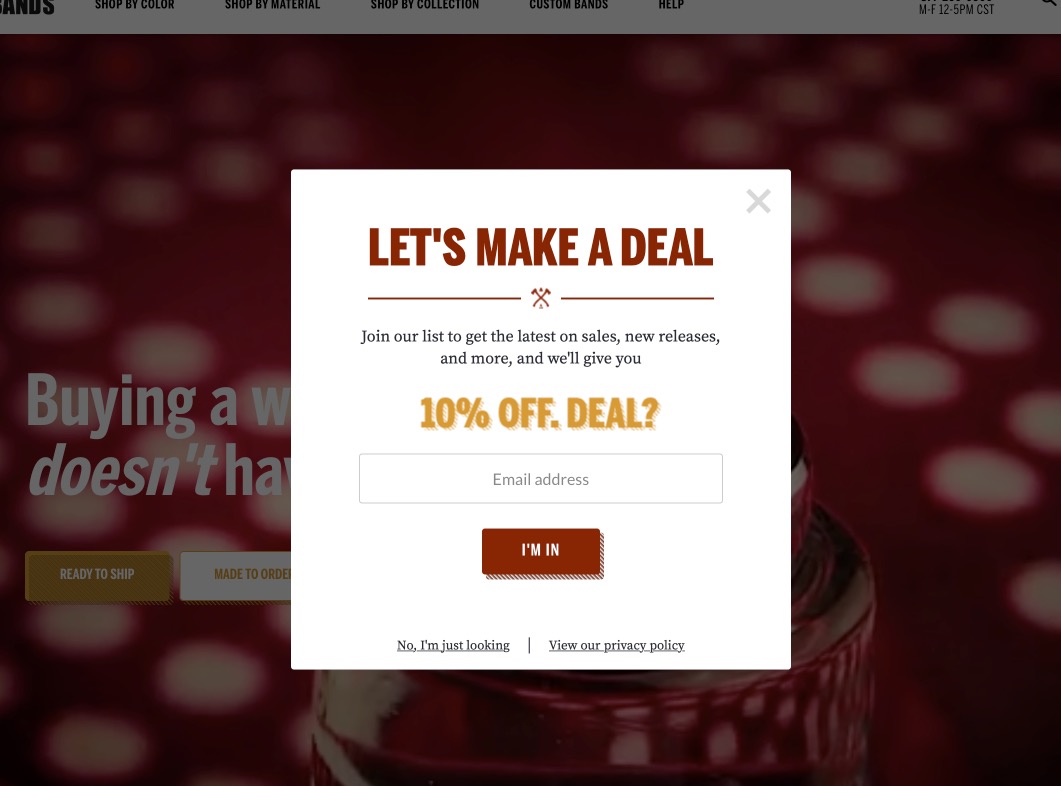
Despite what many marketers believe, personalization isn’t customization. Personalization is a really effective way to nudge people to do something that will benefit them – all the while making it crystal clear why they should do whatever you want them to do.
In this guide, we’re going to lay out 5 ways that you could be using segmentation and personalization to get your website selling better. Let’s go!
Strategy #1: Use a CTA Funnel and get people in front of the right offers
Let’s tackle the problem I highlighted above.
Most form tools are dumb. They have no idea that the person on your website is already on your list, let alone a customer. So most form tools will show the email pop up, promising 10% off, to literally everyone.
RightMessage is pretty smart. We know when someone who is in your email database is back on your website. Here’s how we know that.
In RightMessage, you could yourself up with a straightforward CTA Funnel that does the following:
- If someone is brand new to your website, give them a discount coupon in exchange for an email address
- On your email list and not a customer? Remind them of their discount and get them buying
- Already a customer? Based on what they’ve bought, show them a personalized product recommendation
- Are they loyal? Get them referring or provide them a VIP discount (we’ll talk about this more in Strategy #5)
This might seem complicated, but let’s look at how easy this is to set up.
First, we’re going to create a brand new CTA Funnel.
If someone’s not a subscriber, we’ll offer them a discount code opt-in offer.
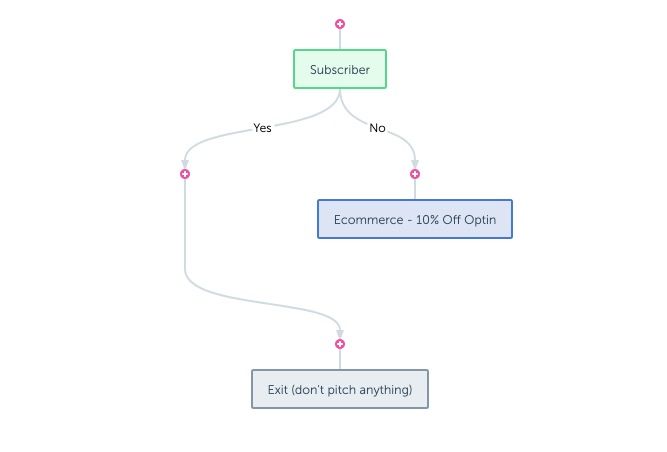
Otherwise, we’ll check to see whether they’re a customer already.
No? OK, let’s remind them about the discount that’s waiting for them.
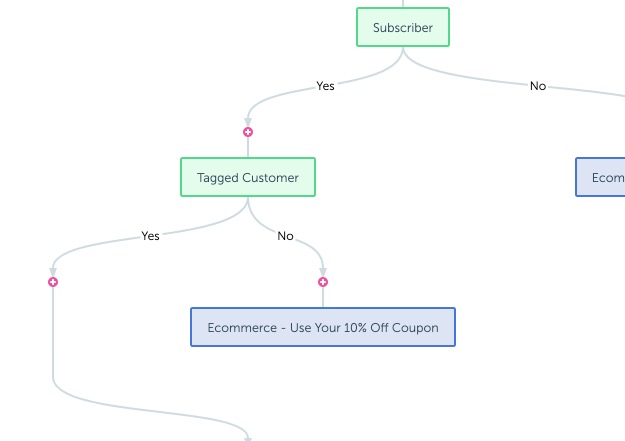
They are a customer? Awesome, let’s figure out what they should buy next.
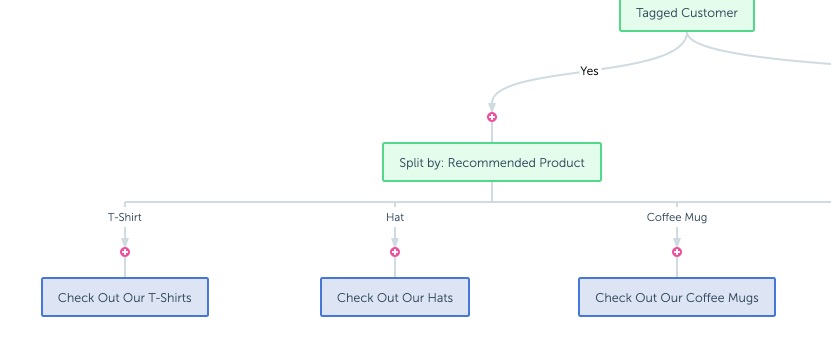
And if this person shows up regularly in your orders database, let’s thank them with a VIP discount.
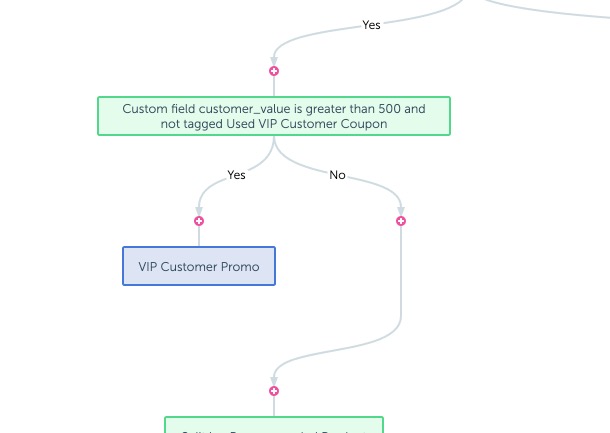
Simple, right? If you want to see this entire funnel in action, we’ve included it below.
Strategy #2: Hire a greeter

Whether someone is new to your website or an existing customer, you can use smart segmentation to dig a bit deeper into what they’re looking for and point them in the right direction.
For example, are they shopping for themselves or their partner? This might influence not only what you recommend to them, but also how you describe a product.
Consider the difference between the following testimonials:
Testimonial #1: “This dress is so functional, and fits better than I could have ever imagined. It’s so comfortable!”
…and…
Testimonial #2: “My wife absolutely loves this dress I bought her for Valentine’s Day. She won’t stop talking about it to her friends!”
Two testimonials about the same product. But which would resonate best with someone shopping for herself?
With RightMessage, what you offer someone and how you offer it can be determined through surveying.
Start with a question about who someone is:
- Are they shopping for themselves? Someone else?
- Do they like scented stuff? Or are they into neutral smelling products?
- Male? Female? Prefer not to say?
And then what someone is specifically looking for:
- Are they about to pop the question? Or are they shopping for an anniversary gift?
- Why are they looking at workout gear – To get built? Lose weight?
- What do you look for in a wine?
With this data, you can do a bunch of things:
How about making that 10% off opt-in form directly address them and what they’re looking for?
“Ready to build more muscle? Yeah, we’ve got you. Enter in your email below and we’ll send you a 10% off coupon to use on our best strength gear.”
And mix in a bit about what they’ve told you into the emails you start sending them?
“Hey! Thanks for joining our list. You’re here to build muscle, and we’re here to help. Not only are we the world’s best provider of strength training equipment and supplements, but we can also help you lose weight, increase endurance, and get in the best shape of your life.”
Or recommend a product that aligns with what they need, and describe that product in a way that directly matches what you know about them?
“Welcome back. We think you’re ready for our premium protein blend, which is designed especially to help guys like you add muscle mass quickly.”
(Bolded text highlights text that would be personalized based on segmentation.)
By showing people that you’re listening, and pointing out what they need and clearly explaining why they need it, heads will turn and more credit cards will come out.
Strategy #3: Are influencers or review sites sending you traffic? Show them off!
Many brands are using influencer marketing to get people to send their audience to their products.
The problem? Someone famous shares a product on Instagram…
A bunch of people click over to the product…
And there’s zilch about the influencer (or the reviewer) on that product page. It’s just… the same exact product page that would be shown to someone who showed up there direct from Google.
Use this as an opportunity to reinforce and highlight the trust the visitor has in who the influencer/reviewer is and what they said about you.
Strategy #4: Tell buyers why you want to know them better
According to a study done by Accenture, 77% of consumers want to buy from companies that deliver a personalized experience.

”Consumers are willing to shop more with retailers that show that they recognize each individual and can provide appropriate recommendations based on their unique needs.”
By progressively profiling your email list subscribers and customers, either over an extended period of time or by using a dedicated survey, you can make it clear that you want to better understand who they are so that you’re able to serve them better.
Online privacy is a big deal, and people are rightfully put off by companies that maliciously collect data.
But if you’re clear about why you’re asking what you’re asking, and ask tasteful questions that allow you to better serve someone individually, people will open up.
We’re big fans of thank you page surveys.
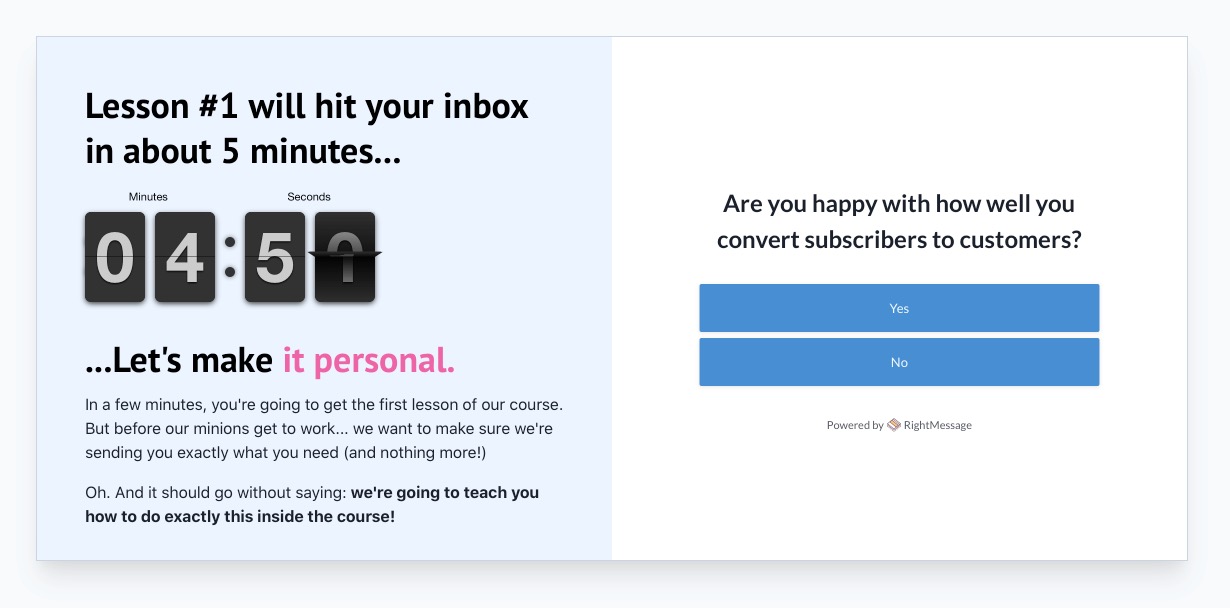
But also consider link triggers in your email campaigns (“Which of the following best describe you…”) and progressive subscriber profiling when people are back on your website (check out our recipe gallery for some ideas.)
Strategy #5: Go all out for your best customers
Wouldn’t it be weird to walk into your favorite coffee shop and have all the baristas oblivious to the fact that you come in every morning?
People buy stuff on websites.
And these websites are backed by customer databases.
These databases know who bought what, and when.
So why does every website, especially some of the biggest ecommerce websites out there, treat everyone like they just visited their website for the first time?
People who regularly buy from a company want to be recognized. They want the brand they’re allied to show a bit of attention back. I know I become an über brand ambassador when the people behind the business go out of their way to reach out to me – even if I know it’s part of some sort of automated customer loyalty program or whatnot.

”You can absolutely have buckets people fall into and you don’t want to get too in-the-weeds with customizing flows but some basic segmenting based on experience level with your brand goes a long way in making customers feel like they matter to you beyond being dollars in your top line revenue.”
Why not try incentivizing your subscribers to tell their friends? People love justifying their big expenses, and one of way of doing that is to evangelize heavily.
Try using a product like SparkLoop, when paired with RightMessage, to reward your customers when they send your friends to your website (who, in turn, end up on your email list.)
Or you could use a more traditional affiliate / referral approach, and point loyal customers to sign up for your referral program.
Other options include something as simple as: “Welcome back! We’re glad your here, and we thank you for your business. Here’s a 10% coupon to use on your next purchase.” Through a combination of on-site and email messages, you can show your best customers just how much you care.
-
These are just a handful of ways that we’ve seen ecommerce customers of ours use RightMessage to deliver better on-site experiences to their visitors, who range from “just showed up from a random ad I saw on Facebook” to “OMG, I love this company and everything they make!”
We hope this inspires you, especially if you’re running an online store and you like the idea of better experiences and increased sales 😎
- About Us
- Contact Sales
- Contact Customer Support
- © RightMessage Inc. 2024
- Privacy Policy
- Terms of Service
